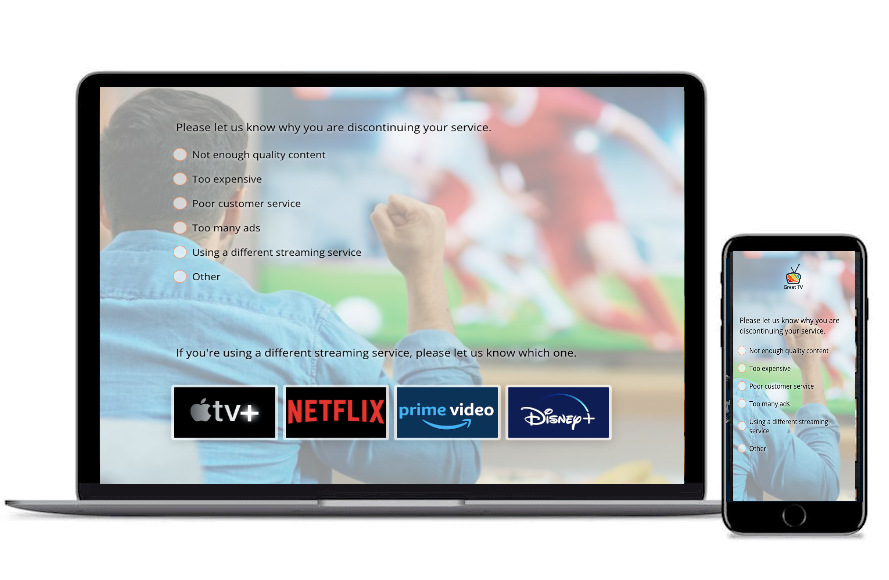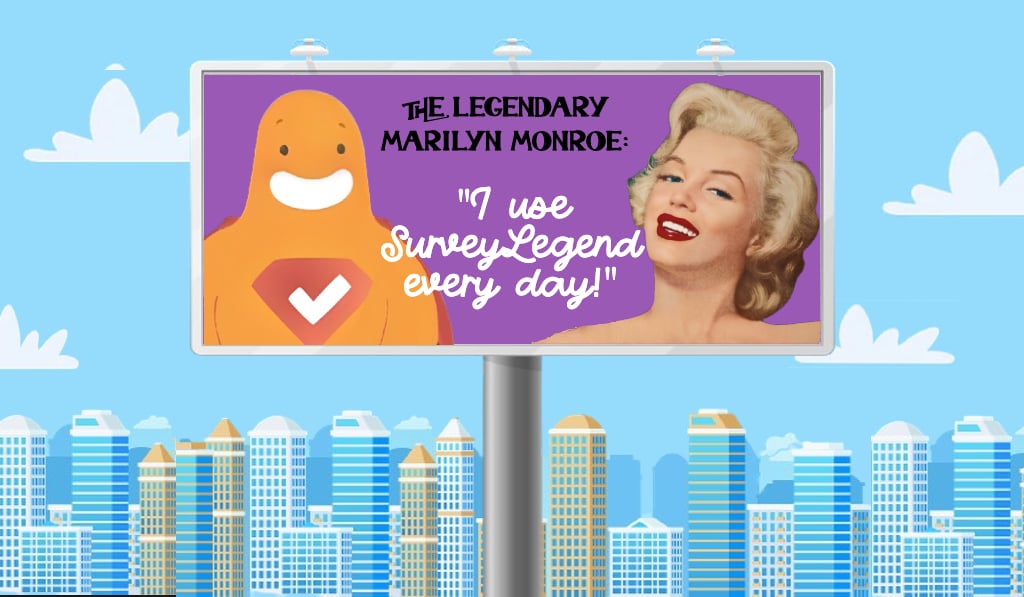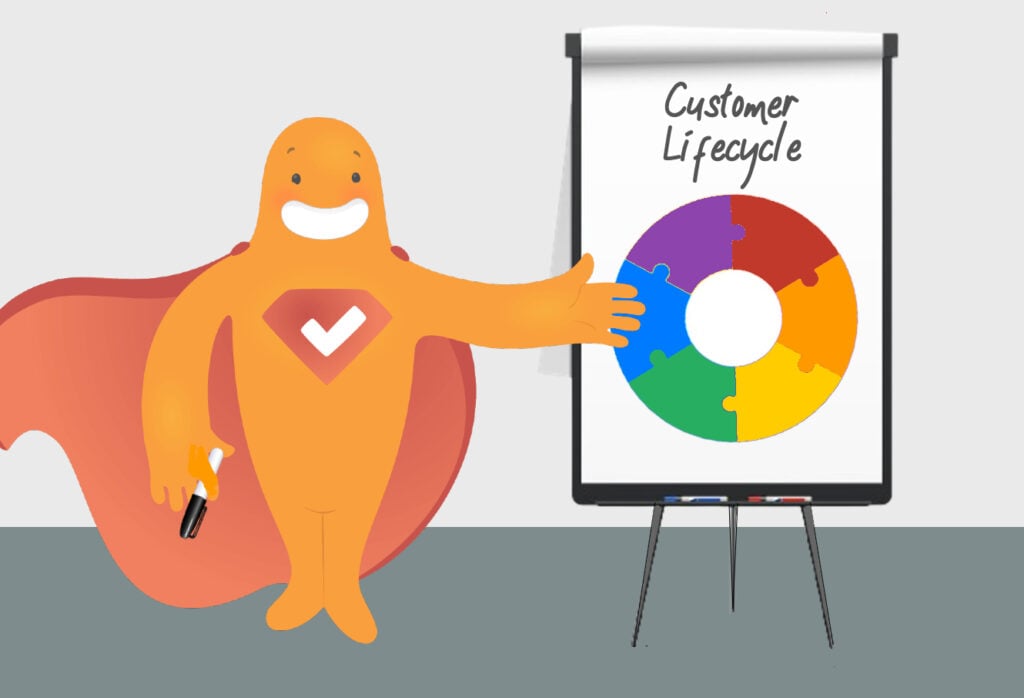Shaken, or stirred. That’s the definition of “churn,” which is often applied to the process of making butter from milk. Of course, we’re not blogging about butter. Churn in the business world is a metric that measures the number or percentage of customers who stop buying from a company in a given period of time. All businesses want to keep churn to a minimum, so we’re going to highlight the importance of customer churn surveys and how they can help with customer retention.
Create your FREE customer churn survey or questionnaire now!
What is Customer Churn?
Customer churn, often simply referred to as “churn,” is a business metric that measures the rate at which a company loses its customers or subscribers over a specific period of time. Churn is a critical indicator for companies, particularly those in subscription-based businesses (such as software as a service, telecommunications, or streaming services), as it reflects the loss of recurring revenue and can impact overall profitability.
Customer Churn Formula
So what is the customer churn calculation? Churn is typically expressed as a percentage and calculated as follows:
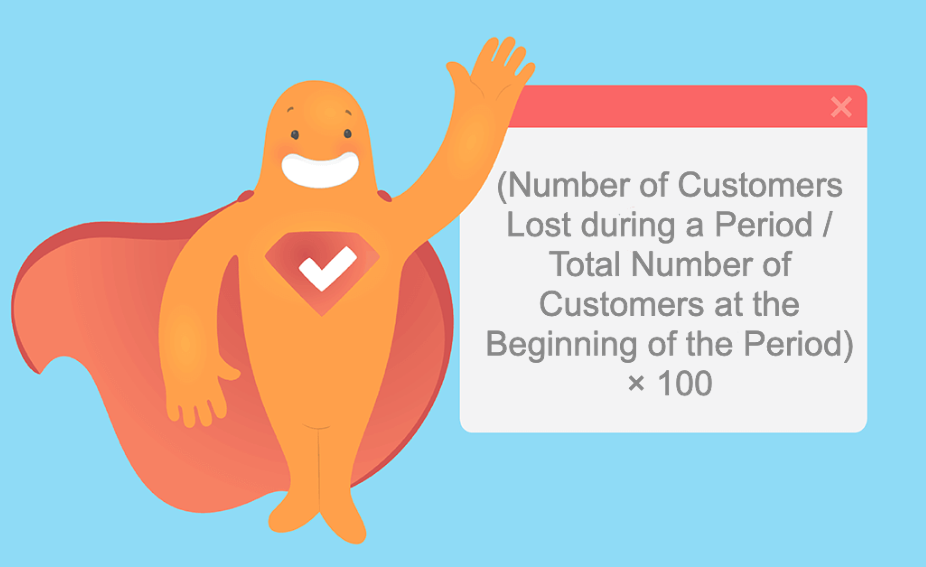
Let’s say your company started the year with 800 customers. At the end of the year, you had 725, meaning you lost 75 customers. Here’s the calculation:
75/800 = .094
9.3 X 100 = 9.4% yearly churn rate
Churn Rate vs. Growth Rate
It’s important to look at other factors besides churn. The opposite of churn rate is growth rate, or the rate at which your business attracts first-time customers in a given period. Comparing the two metrics will show you whether your customer base is growing or shrinking. A higher churn rate than growth rate is not good as it means a loss in customers, while a higher growth rate than churn rate is good because your customer base is growing.
So, you may have a product that only warrants a purchase every few years, so your yearly churn rate will be high; however, if you continue to bring in new customers, increasing your growth rate, you’re still in good shape.
Customer Churn Statistics
Churn rates can vary significantly by industry and business model. Your best bet is to determine your industry’s average and compare against that. A rate exceeding the average means your product may not meet consumer expectations.
That said, according to Forbes, the ideal churn rate for mature and established companies is 5% to 7% in annual churn and less than 1% in monthly churn. If your SaaS company had 1,000 customers, this means you would only lose 50 customers per year or four to five customers per month. Early-stage startups or small businesses typically have a churn rate of 10% to 15%. Again, this can be much greater. The outlet reports that e-commerce industries, where there is an abundance of choices and competition, can have a higher rate of churn of around 70% to 80%.
Create your FREE customer churn survey or questionnaire now!
5 Customer Churn Considerations
Here are some things to think about when looking at your customer churn rate.
1. Churn Types
Churn can be categorized into voluntary churn and involuntary churn.
- Voluntary churn occurs when customers actively choose to cancel or discontinue their subscription or relationship with a company.
- Involuntary churn occurs due to reasons beyond the customer’s control, such as payment issues, credit card expiration, or service disruptions.
2. Reasons for Churn
Understanding the specific reasons for churn is essential for businesses to address and reduce it effectively. Customer churn can result from any of the following:
- Dissatisfaction with the product or service
- Better offers from competitors
- Changing customer needs
- Poor customer service
- Economic factors
3. Churn Analysis
Companies often perform churn analysis to identify patterns and trends related to customer attrition. This analysis can involve:
- Examining customer feedback
- Conducting NPS surveys
- Studying customer behavior to pinpoint the root causes of churn
4. Churn Mitigation
Wondering how to reduce customer churn? Once the causes of churn are identified, you can take steps to reduce it, such as:
- Improving the quality of products or services
- Enhancing customer support
- Adjusting pricing strategies
- Offering loyalty programs such as rewards, discounts, and personalized offers
5. Customer Retention
Reducing churn is vital because retaining existing customers is generally more cost-effective than acquiring new ones. In fact, there’s a standing rule that says it costs five times more to acquire new customers than it does to retain old ones. That’s because high churn rates can require substantial marketing and sales efforts to replace lost customers, which can be expensive and less predictable.
Another way to identify what makes people consider your product versus another is by asking potential new customers if they might use your product or service. This can be accomplished through a new prospect survey. Read more about them in our prospect survey blog.
Conducting a Customer Churn Survey
A customer churn survey can be used to understand why customers are leaving or discontinuing their relationship with your business. The goal of a customer churn survey is to gather feedback and insights from departing customers in order to identify the underlying reasons for their decision to discontinue the relationship.
Churn surveys explore various aspects of the customer experience, such as product or service quality, customer support, pricing, and overall satisfaction. They may also inquire about specific reasons for leaving, like competitor offerings or changing needs. By identifying the reasons for churn, you can take steps to reduce customer churn and improve customer retention.
It’s important to note that customer churn surveys can be conducted at various stages of the churn process. This might include just after the customer has canceled, a few months after churn, or even on an ongoing basis as part of customer feedback programs.
Create your FREE customer churn survey or questionnaire now!
Customer Churn Survey Example
Here’s a look at a customer churn survey created with free survey maker tool SurveyLegend for a fictitious streaming service called Great TV. You’ll see various types of questions are used to increase engagement and response rate. SurveyLegend will automatically collect survey responses, providing valuable customer churn data that you can analyze to identify trends and common themes among departing customers. You can then use this information to develop strategies for customer retention and improving the customer experience. Learn more about creating a survey here.
Survey Welcome Page
SurveyLegend allows you to create a Welcome Page (or “Sorry To See You Go” page) which states the reason for the survey. This lets departing customers know you care about their opinion and strive to do better (it could even encourage them to re-think leaving).

Customer Churn Survey Page 1
Page one of the survey asks the customer why they are leaving. Remember to always include an “other” option in case their reason doesn’t fit into your pre-given answers. You can always include an open-ended question that allows them to elaborate, or you can remove “other” responses from your analysis.
This question is followed up with a survey image question asking them to select the streamer they are switching to (if that is in fact why they are leaving).
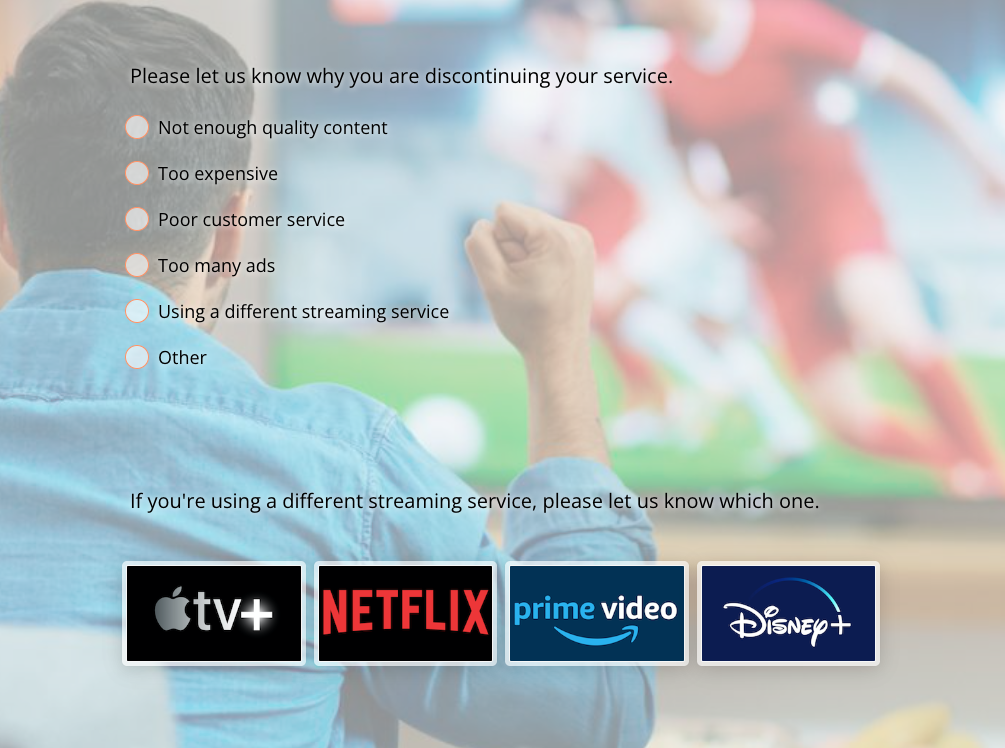
Customer Churn Survey Page 2
The second page asks for their overall opinion of Great TV (this is important, because although they are leaving, it may not be because they don’t like the service). It also asks if they will return in the future (many people switch streaming services frequently, and then come back) and what could be done to win them back.

Survey Thank You Page
The survey concludes with a thank you page. It’s important to keep churn surveys short (known as microsurveys), as the customer is severing ties and may not feel they owe you any answers; if the survey is too long, they’re less likely to participate under the circumstances. The concluding thank you page does offer them a money-saving deal to reconsider, as a last-ditch effort to retain the customer.

Conclusion
Customer churn surveys are a valuable tool for businesses to not only understand why customers leave but also to enhance their strategies for retaining existing customers. They can help companies make data-driven decisions to reduce churn and increase customer loyalty, ultimately leading to improved business performance and growth. Ready to create your survey? Start today with SurveyLegend!
Have you ever participated in a customer churn survey? How was your experience? Did the survey make you reconsider parting ways? Let us know in the comments!
Create your FREE customer churn survey or questionnaire now!
Frequently Asked Questions (FAQs)
Customer churn, often simply referred to as “churn,” is a business metric that measures the rate at which a company loses its customers or subscribers over a specific period of time.
Customer churn = (Number of Customers Lost during a Period / Total Number of Customers at the Beginning of the Period) x 100
Companies try to prevent customer churn by continuously improving the quality of products/service and customer support, adjusting pricing strategies to be competitive, and offering loyalty programs such as rewards, discounts, and personalized offers.
